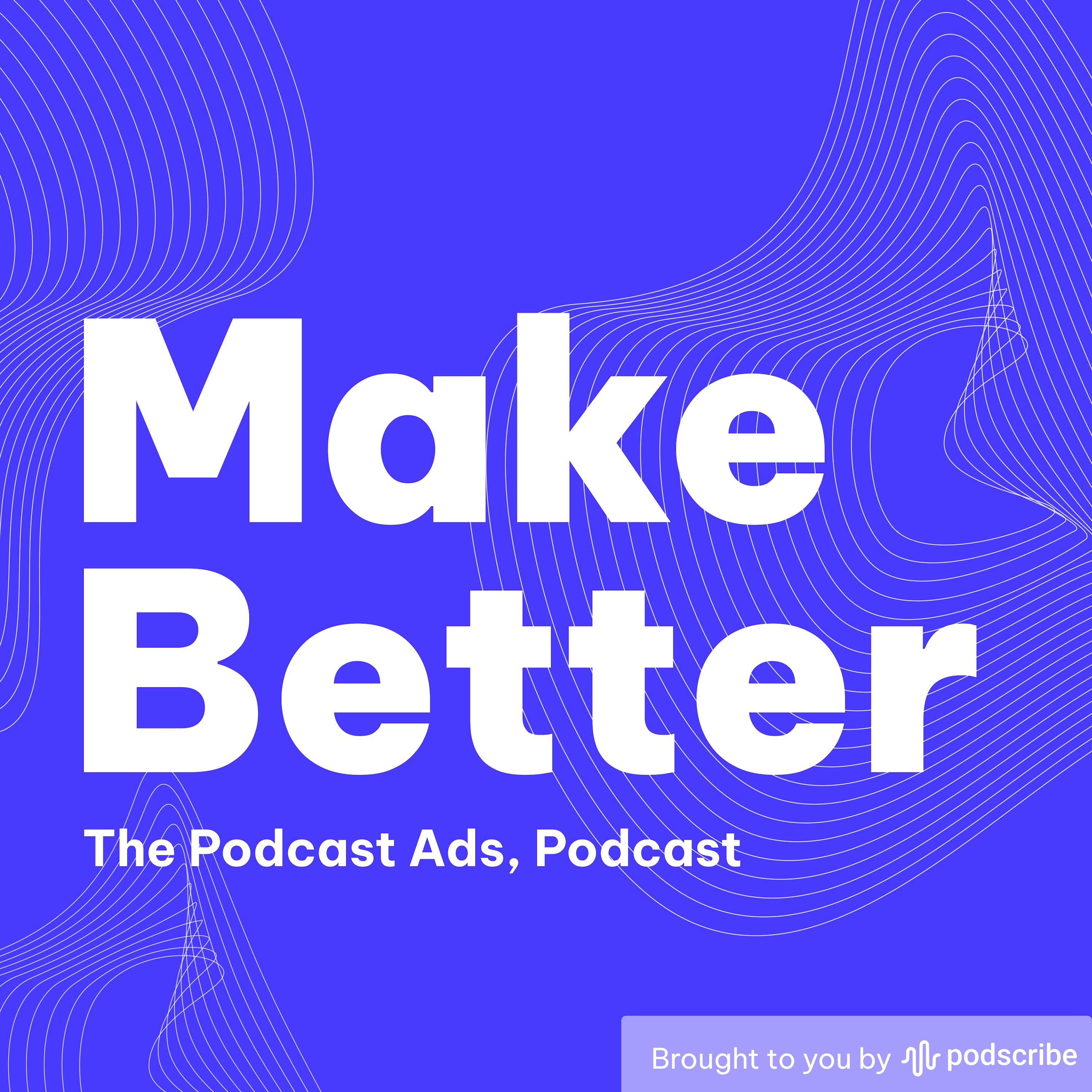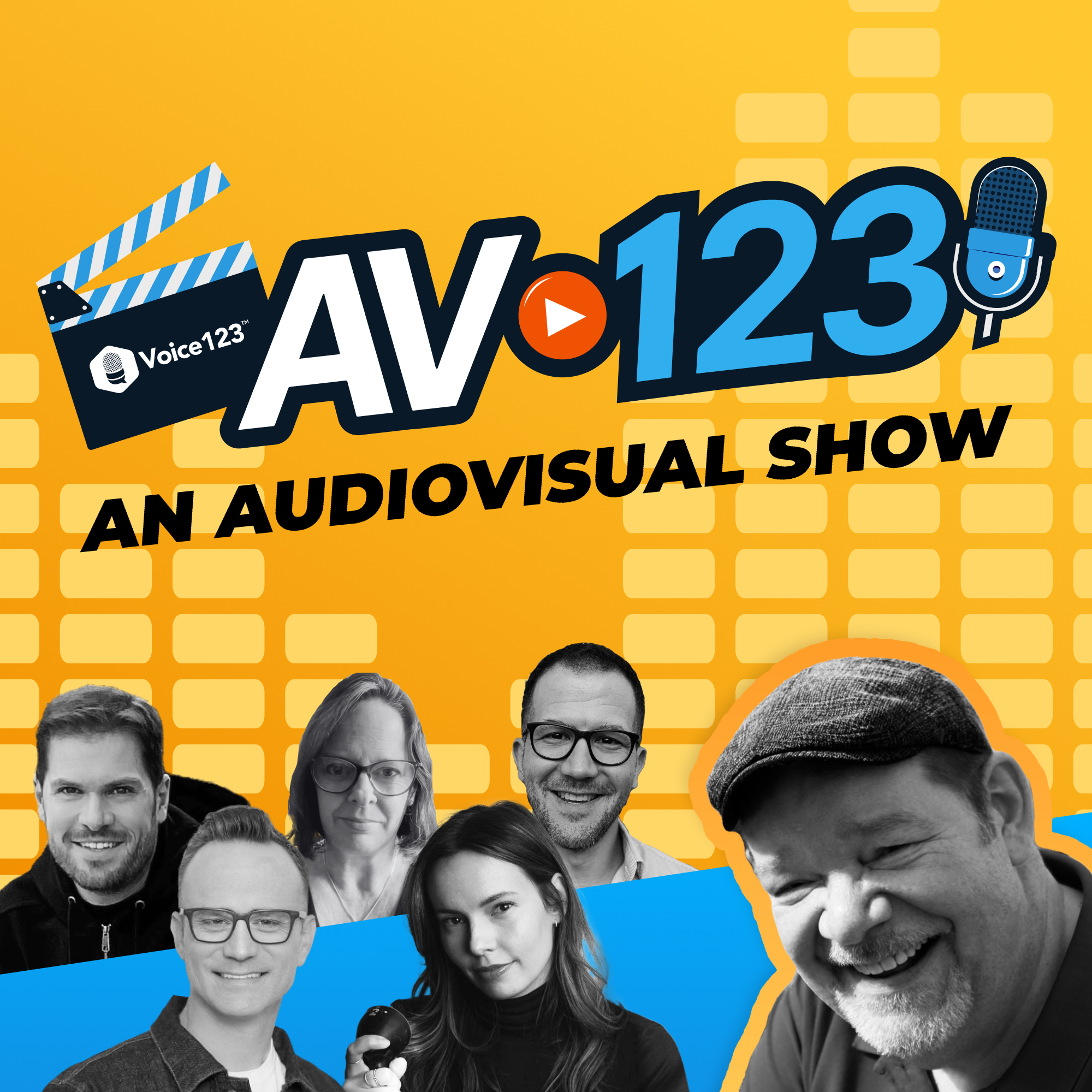
Ad Infinitum
Ad Infinitum is the award-winning podcast solely focused on audio ads - the creatives who make them and/or the latest thinking that informs them, how the space is evolving, and a round-up of recent audio ads and analysis by Stew Redwine and each episode's guest.
Ad Infinitum is Presented by Oxford Road and Produced by Caitlyn Spring & Ezra Fox, MFA, written & hosted by Stew Redwine, and sound designed by John Mattaliano, with audio production by Zach Hahn.
Ad Infinitum
Audio Nudges
Ad Infinitum is the only podcast solely focused on audio ads - the creatives who make them and/or the latest thinking that informs them, how the space is evolving, and a round up of recent audio ads and analysis by Stew Redwine, VP Creative at Oxford Road, and each episode's guest. The first season's episodes focus on individual Audiolytics? Key Components and how they show up in the ads for some of the top spenders in audio. This episode's guest is Phill Agnew. Phill is a senior product marketer at Buffer, product marketing ambassador at the PMA, and host of Nudge, the only podcast dedicated to consumer psychology where he interviews professionals in the business of persuasion like Daniel Pink, author of Drive: The Surprising Truth About What Motivates Us & To Sell Is Human: The Surprising Truth About Moving Others.
Real Talk About MarketingAn Acxiom podcast where we discuss marketing made better, bringing you real...
Listen on: Apple Podcasts Spotify
Ad Infinitum is Presented by Oxford Road and Produced by Caitlyn Spring & Ezra Fox, MFA, written & hosted by Stew Redwine, and sound designed by John Mattaliano, with audio production by Zach Hahn.
Speaker 1 (00:00):
Hit it.
Stew Redwine (00:01):
Ad infinitum is the only podcast solely focused on audio ads - the creatives who make them, the latest thinking that informs them, how the space is evolving, and my favorite part, a roundup of recent audio ads and analysis by yours truly, Stew Redwine, VP Creative at Oxford Road and each episode's guest. This episode's title is Audio Nudges, and our guest is Phill Agnew. Welcome to the show, Phill.
Phill Agnew (00:26):
Hey, hey, thanks for having me, Stew. I'm so glad to be here.
Stew Redwine (00:28):
It's awesome to have you. You know, I listen to Nudge constantly. It is an absolute go-to for me when it comes to persuasion and thinking on it, um, over time and the latest thinking. I tell everybody about it. So, super thrilled to have you on.
Phill Agnew (00:42):
Thank you, mate. Well, I spend a lotta time thinking about audio ads (laughs) for my show, Nudge, so I'm very excited to talk to you.
Stew Redwine (00:47):
Excellent, excellent. And a little bit about Phill. He's a senior product marketer at Buffer, product marketing ambassador at the PMA, and the host of Nudge, like we're talking about, the only podcast dedicated to consumers, psychology. So, Philll, what I wanna point out is that our main audience here for Ad Infinitum is what we at Oxford Road call the chief audio officer, that isn't a role that exist. Maybe if we keep talking about it, it'll be one.
(01:14):
But in a sense, there's always somebody that is making a decision on either stewarding or deciding on the budgets of what's gonna get invested into audio, so that's really who we're talking about. So my first note for any chief audio officers, regardless of what their title is, the person that's, uh, you know, in charge of stewarding or deciding on the budgets for audio is listen to Nudge by Phill Agnew. And, Phill, what's been your journey in getting into the history of advertising and persuasion?
Phill Agnew (01:41):
Yeah, well, uh, you know, I spent the last 10 years in marketing. I spent 50,000 British pounds on a marketing degree, which was largely useless (laughs). Um, and I, uh, went into a marketing world role, you know, around almost 10 years ago. And, um, I have figured out after spending all this time and all this money on a marketing degree that in this marketing role, I was pretty useless at marketing (laughs). All of the things I was being asked to do, whether it be, you know, write a blog post or come up with an email subject line, or create some messaging for a website that'll compel people to buy, I was trying to do all these things and I was almost useless at it, despite having so much time spending, learning the textbook sort of marketing practice.
(02:22):
And then I stumbled upon the world of psychology and behavioral science and realized that marketing doesn't have to be based on gut instinct or sort of best practiced advice. It can be based on laws and a little bit of science, the science of psychology because we've spent basically hundreds of years trying to understand how people make decisions. This is the field of, of psychology and behavioral science. And we're pretty good at figuring out why people make the decisions they do. We've got really hard evidence into this. And if you apply this psychology, consumer psychology and behavioral science, to your marketing, you can be much better at predicting if people will open your email, if people will read your blog, if people will buy your product.
(03:02):
And since then, which is about eighth years ago, I've spent a lot of time studying the world of consumer psychology. Four years ago, I created my podcast, Nudge, where I interview experts, people much, much smarter than me on the topic, and I try to figure out, you know, how this stuff works. And I apply it myself in my day job at, at Buffer. Um, but you mentioned mere exposure. Is, is that one you'd wanna talk about a bit, Stew?
Stew Redwine (03:21):
Yes, absolutely because I think a recent conversation I've been having in-person and then, like, on LinkedIn is about the quality of synth voices and, uh, whether or not that's a turnoff or something and if you can, you know, is it patronizing, you know, how lifelike do they sound and, you know, the uncanny valley and all these different dimensions. And part of me just goes, "Mere-exposure effect." Like, the folks that are working on these synth voices, I was just talking with somebody yesterday who that is their entire business is making these voices.
(03:54):
They're trying really hard to make 'em human. And as they're doing that and the voices are getting better, we're getting exposed to them, and with the mere-exposure effect, as far as my understanding of it and from listening to you, is we actually are gonna begin to like these voices. And then once they actually catch human voices, well, we'll like 'em as much as we like human voice. But in the interim, even if it is is kind of synthetic sounding, if I hear a synthetic voice all the time, over time, I will begin to like the voice. Like, do I have that right?
Phill Agnew (04:25):
I mean, pretty much, I think the best example I can give of that is the sort of TikTok narrator audio voice which is a very synthetic sort of robot-esque reading the caption that's put on top of TikTok videos.
Speaker 3 (04:35):
I love podcasts.
Phill Agnew (04:36):
And that's very popular now (laughs). Some of the most viral TikTok videos have this voice and, yeah, this goes a little bit towards the mere-exposure effect. And the mere-exposure effect is very simple. It means the more you are exposed to something, the more likely you are to like, remember, recall, but specifically like that thing. So there's a great study which was done with Chinese, uh, literature, so Chinese characters, so essentially words in, in Mandarin. And these Chinese characters were shown to university students in the USA. These university students, they haven't studied Mandarin, they didn't know what the characters meant, they had no inkling (laughs) to what they meant, you know, completely, um, unaware of what these characters actually meant.
(05:14):
And what happened in the study is some of the characters were shown more often than other characters. So say the word for, I don't know, desk was shown a little bit more than the word for fence, for example. And what they discovered after asking the university students to rate how much they liked the different characters, how much they liked the look of them, for example, is that the characters that was shown more often were essentially liked much more than the ones that were shown less. So repeat exposure to something makes you more likely to like it. There was another really odd (laughs) study in another American university where the start of term, all the students went and sat down in their university lecture hall. And at the back of the class, somebody was dressed in a black bin bag. So just (laughs) sitting at the back of the class was some dude in a black bin bag. You can't see their face, you, you can't even see, you know, what gender they are.
Stew Redwine (06:06):
Like a black trash bag. A black trash bag.
Phill Agnew (06:09):
A black trash bag (laughs), yeah. And the first day this happened, people were freaking out, they were asking the, the lecturer, "What's going on?" The lecturer refused to say, didn't say what was going on, and people were like, "What the hell is this?" And then they came to the second lecture a week later and they, they were still there. And they were a little bit creeped out and then the third, and then the fourth. And then by the end of term, oh, by the way, after every lecture, the lecturer had polled people on what they, you know, how they felt about this menacing figure in the back of the room. And at the start of the term people were very concerned, people were very scared. But after a lot of repeat exposure, by the end of term, people had really grown to love (Laughs) this person with the black trash bag over their head.
(06:45):
Um, there was, like, reports of them saying, oh, they, they would really missed him if he wasn't there. And that's, uh, you know, a bit of a novel way of thinking about the mere-exposure effect. But of course, this can be applied to advertising and all sorts of marketing in different ways. It essentially means that the more somebody sees your message, the more somebody sees your brand, the more somebody sees your ad, naturally, the more likely they are to like it. And it's a bit of an evolutionary trait. We are more naturally inclined to people we see more often. And the same is probably true for synth voices too. And I'm sure there are lots of other examples as well.
Stew Redwine (07:15):
Check out this latest video with Phill Agnew showing you all the secrets of marketing-
Phill Agnew (07:22):
(laughs).
Stew Redwine (07:22):
... on his podcast, Nudge. That was my-
Phill Agnew (07:25):
(laughs).
Stew Redwine (07:25):
I was trying to do the TikTok voice.
Speaker 3 (07:27):
That was scary.
Phill Agnew (07:28):
(laughs) That was really scary. Thanks for, thanks for terrifying me. We don't have video on here, so that was really petrifying.
Stew Redwine (07:33):
(laughs).
Phill Agnew (07:33):
I was, like, "Who's this?"
Stew Redwine (07:34):
(laughs).
Speaker 3 (07:35):
Okay, guys, let's listen to some ads.
Stew Redwine (07:37):
Great. So this week, we're talking about the value prop. Let's get into, you know, how are some people doing this in their ads, right? That's what we wanna talk about. So-
Phill Agnew (07:44):
Yeah.
Stew Redwine (07:45):
... we're gonna talk about Audiolytics Key Component number two which is a value prop, to go set up value prop positioning, demonstration, substantiation, offer, scarcity, path and execution. So let's zoom in on the value prop. Uh, the definition that we use for value prop is what is it? Clearly communicate the name of the brand. Define the brand's product or service and state the outcomes and benefits created by use of the brand's product or service. All right. So that's what we're talking about when it comes up to the value prop. And what I wanna do is zoom in and listen to ads by Kohl's, State Farm, AutoZone, and Grainger, all advertisers here in the United States that over the last year have spent, um, tens of millions of dollars a piece on radio here in the United States. So, I think we should start with Kohl's. Are you ready to take a listen?
Phill Agnew (08:34):
Yeah, let's go.
Speaker 4 (08:34):
I don't know about you, but freshening up my house for spring is one of my favorite times of the year. That's why I'm so glad I made a stop at Kohl's, where I was able to save 25% off must-haves from Sonoma Goods for Life, like new décor for my living room and the softest sheets for my bedroom. Plus, I earned Kohl's Cash. So if you wanna spend less on your spring home refresh, you know where to go. Smart styles. Offer ends March 12th. See store or kohls.com for details.
Stew Redwine (09:03):
So there we go. So I'll tell you the grade after for the Kohl's spot, but first, I wanna hear what you think, Phill.
Phill Agnew (09:10):
Yeah, I've got some thoughts. I liked this one. Um, I, I think it used two interesting biases. Uh, maybe not so much in the actual messaging, uh, you know, the core message maybe wasn't as compelling as, as it could be, but there were two interesting biases it used. So it started by referencing, you know, this spring time. And that's a really powerful thing to reference, um, in your, in your ads because what that is, is it's called, known in psychology as a Fresh Start Effect. So... Or a fresh start date, I should say. And these fresh start dates have been discovered, or sort of popularized by a researcher called Katy Milkman. And she did a bunch of studies where she was trying to encourage people to start a new habit.
(09:46):
So whether that is going to the gym or reading a book. And what she found is people were far more likely to start a new habit if they were encouraged to start it on what's called a fresh start date, so a sort of significant date in your mind. So your next birthday, a new year, a new season, so spring, which is what Kohl's are doing here, which they're using very well, or even next week. And these fresh start dates can be very effective if you use them. So if you encourage people to do something in this big momentous date, so next spring, for example, people are more likely to do something. And I've actually tested this myself with Nudge. Not with an audio ad but with a Reddit ad.
(10:19):
On my Reddit ad, I encouraged people... I think I had a normal ad for Nudge saying, you know, it's the only podcast dedicated to consumer psychology. And then I had a question at the end. I said, "Would you listen in the next few days?" In one variant that went to 50% of people. So no fresh start day. And then in the second variant, I said, "Will you listen next week?" Which is a small fresh start variant. You know, it's just basically saying like, "Start of the new week. Next Monday, will you listen?" And what happens is when I say next few days only 9.1% clicked and essentially said, yes, they would listen. When I said next Monday, next week, 15.9% clicked and listened.
(10:52):
So people were far more likely to act when there was this fresh start date, this, this date in the future. And I think what Kohl's are doing with spring is, is quite nice as well. I also like the end of the ad where they say, "Offer ends March 18th." Now, this is something that is quite common in ads, but is not as common elsewhere. But essentially, if you say your offer ends at this stage, you're basically pulling at a bit of scarcity. You're saying, "This is a scarce. This offer is scarce, it'll run out after a bit of time. It won't last forever." And there's one example of an industry that doesn't do this at all and it's such a shame. So it's the movie industry.
(11:21):
Movie industries never say when the movie will come off air, when the movie will stop screening in cinemas. They instead say, "Coming to theaters near you on Halloween," or whatever it is. But when movies do say that, when movies do say, "Ending this week," something interesting happens. Richard Shotton, a psychologist here in the UK studied this. He showed the same movies and he said to one group, "Will you go and watch this movie?" And one group saw that the movie was airing in spring, for example. And the other group saw that the movie would stop airing on June 17th, f- for example.
(11:49):
And the group that saw when the movie would stop airing were 36% more likely to actually go and attend to that movie than the ones who just saw when it coming on air. So it's really smart that Kohl's say when that offer will stop being around 'cause that will drive people to action far more than saying, "Oh, this offer is available from today."
Stew Redwine (12:05):
All great points. And from an Audiolytics standpoint, uh, Kohl's received a 6o%. And our, our target for all in market creative is a 90%. So it received a 60% 'cause there's a couple of things that it could do differently just to sharpen up what's already there and what's already good. So specifically around the value p- prop, like we said, we wanna clearly communicate the name of the brand, define the brand's product or service, and state the outcome and benefits created by use of the brand's product or service. So when we're looking at this, what is interesting is that that's all sort of implied. I don't know about you, but "Freshening up my house for spring is one of my favorite times of the year," that's an intro. Is that also the value prop, is freshening your home for the spring? "That's why I'm so glad I made a stop Kohl's, where I was able to save 25% off must-have from Sonoma's Good for Life," so is that the value prop, that you can save on Sonoma Goods for Life?
(13:00):
"Like new décor for my living room and the softest sheets for my bedroom," is the value prop living room décor? Is it the bedsheets? And then it goes on to talk about the offer, uh, end date. The point is, it's saying a lot of good things. They could just be reordered and sharpened to be more single-minded. And then create clarity around what is the value prop for Kohl's for this ad. And is it really the 25% off with Sonoma Goods for Life? Well, then, like, let's lead with that. Perhaps craft an intro around that. Like, is Kohl's the only place that you can get that big of an offer on Sonoma Goods for Life just for spring until March 12th? Then go there. Right now, the ad feels like it's trying to be a few things when it could be more single-minded and particularly around what is the value prop.
Phill Agnew (13:56):
Mm-hmm. I think yeah, you're making a really good point there. And I think you're, you're bang on there, Stew.
Stew Redwine (13:58):
All right. Let's listen to the next one. It's from State Farm.
Speaker 5 (14:04):
Welcome to What If, the show where I, Jake from State Farm, answer your insurance what-ifs. We've got a call from Millie. What's up?
Speaker 6 (14:12):
Hi, Jake. Wh-, uh, what if hypothetically, a moose gets mad at my car and, huh, rams into my windshield, hypothetically?
Speaker 5 (14:19):
Oh, just file a claim on the app. At State Farm, we're there for your what-ifs.
Speaker 6 (14:23):
Great. But what if the moose eats my phone, hypothetically?
Speaker 5 (14:27):
Like a good neighbor, State Farm is there. Call or go to statefarm.com for a quote today.
Phill Agnew (14:31):
(laughs). Yeah, it's a bit odd, isn't it? It's like... (laughs). It's not a typical ad you would listen to. I don't think people will come away with a feeling of, "Yeah, like, I really understand what they're going for there." I think what they're trying to do is avoid [inaudible 00:14:47], which we spoke about earlier, right? They're, they're trying to avoid these typical ads which just say, "Oh, State Farm is, is fantastic. We're leaders in the field. We've got the most innovative tech. Come to us for a quote today." That sort of thing.
(14:58):
They're trying to avoid that by, you know, framing this as a conversation between two people. It's meant to be, I guess, sort of lighthearted. I think it's meant to be funny. I don't think it does a very good job. I just think it executes really poorly. I don't think it's, it's funny, and, and it meant to be. I think the copy is like a little poorly written. And I think trying to get this sort of conversation style ad into 30 seconds just doesn't really work for me. So, yeah, not one that I think many people will learn too much from. I don't know, What do you think, Stew?
Stew Redwine (15:28):
Well, I mean, I agree with you on it's like, it's not quite there. I mean, from an Audiolytics grading standpoint, this one scored lower than Kohl's, uh, with a 50%. I think, again, there's a lack of clarity. And it's, like, you know, we pulled these ads based on spends. So these are advertisers that are spending, like I said, tens of millions of dollars a year in audio. And in looking at this State Farm ad just from our grading standpoint, it's just missing some of the key components where it's making this trade on going, "I wanna be entertaining," which the insurance companies tend to do, "but whether I no it or not, I'm gonna trade a lot on clarity."
(16:12):
You know, if we really were trying to be as direct as possible, essentially what's kind of on offer here is this What If program as if it was real, but it's not real. So, really, the only value prop in here is that you can call or go to State Farm for a quote. It's the very last thing that is said and I think they didn't quite get there from a comedy standpoint. But that's where I have to be careful. So instead, what I'll fall back on is structure and just to go like, "Okay, it's got an interesting setup, my value prop actually is buried. It's, it's out of order. It's way at the end of the ad."
(16:48):
So then I go, "Okay, well, are they positioning State Farm against anything else? No, not directly. Are they demonstrating State Farm? No, not directly." But in a goofy kind of, um, metaphorical way as if this What If program was real. Are they substantiating State Farm? Well, the mere fact that they're showing up on radio at the volume in which they show up on radio, I know that there's a psychological persuasive, um, effect for that. What's that called where... Is it, it's cost signaling or something like that.
Phill Agnew (17:18):
Yes, co- costly signaling.
Stew Redwine (17:20):
Costly signaling.
Phill Agnew (17:20):
Yes, yes.
Stew Redwine (17:21):
So, so that's something we look at of, like, just being on national radio and having this level of production quality has some persuasive capabilities, right? Is that the right understand of costly signaling?
Phill Agnew (17:33):
Yeah, the basic meaning is the cost you incur to send your message directly correlates and it increases the value upon which the audience will receive that message. (laughs) So, you know, if you, if you tried to propose to someone in a Burger King, you're not incurring much cost, you know (laughs). But if you do it at a Michelin style restaurant, you're far more likely to get the yes that you want. And the same is true for advertising. You know, if you do a Super Bowl ad, people will just perceive that brand as being better because it has the money to buy a Super Bowl ad. So, being on national radio definitely does help.
Stew Redwine (18:05):
Precisely. So that has a weight in and of itself. Uh, but still, that one's at a 50, doesn't have a super clear value prop again. Kohl's doesn't have a very super clear value prop. So let's go to AutoZone.
Speaker 8 (18:15):
AutoZone.
Speaker 9 (18:17):
Welcome to AutoZone. So you need to change your oil? Right now you can get five quarts of Valvoline Daily Protection or Valvoline MaxLife High Mileage motor oil with an STP oil filter. Plus an STP air filter or cabin air filter for just 36.99. Visit one of our 6,000 stores or order from autozone.com for same-day store pickup or next-day delivery.
Speaker 8 (18:45):
Get in the zone, AutoZone.
Speaker 9 (18:45):
Restrictions apply.
Stew Redwine (18:45):
Do they have AutoZone in the UK, Phill, that's the question?
Phill Agnew (18:47):
I think they've got a variant of it. I think they got a... I'm not a car driver, so actually, (laughs) these companies are-
Stew Redwine (18:52):
So this ad's way off target for you?
Phill Agnew (18:54):
Way off target. Yeah, that might affect my score.
Stew Redwine (18:57):
Okay (laughs), yeah.
Phill Agnew (18:57):
(laughs).
Stew Redwine (18:58):
So what, uh, what do you see is going here. Do... Is, is AutoZone... How, how are they faring compared to those other two?
Phill Agnew (19:04):
So, let's get into the difference of this ad. This ad is, is sort of, it's getting really into the product. It's really just saying, "Here's what you can buy, here's how much it is, here's where you can buy it, here's what's available in it." You know, it is like the most, I, I guess basic form of marketing you could go for. And it's necessarilly a bad thing. You know, just clearly saying what you are offering can make it very easy for your target customer who, let's face it, you're gonna have a lot of your target customer driving cars who need this type of service. It can make it very easy for them to make a decision. So, there's elements of this which are really good in that sense in terms of if you are the target customer and you're listening to that ad, you are probably quite likely to take action 'cause they make it very easy for you to take action.
(19:48):
You know exactly what they have on offer, you know exactly how much it cost, you know there's 6,000 stores around the country where you can go and, you can go and get that thing. Now, I think it could be better. I think they could be doing a few more things to make it more interesting. I think they could add a bit of scarcity in there, maybe saying an offer only lasts a bit of a week. You could potentially do a bit of labor illusions. There's this wonderful thing called labor illusion where, you know, you can sort of say all of the work that has gone into creating that oil. So just saying like, "Oh, we've spent, you know, five years manufacturing this oil, trying to get it as perfect as we possibly can and it's now available for you for just 39." I basically think they could add a little bit more value. But I accept that this is a 30-second ad and there's not much time to do that. And AutoZone have probably been advertising lots of different ads which has added that value to their brand. So in terms of keeping it easy, keeping it simple, making it easy enough for people to take action, yeah, I think, I think AutoZone have done a, a pretty good job. What do you think, Stew?
Stew Redwine (20:44):
Yeah, so this one scored the highest so far with Audiolytics scoring of a 70%. Uh, just like you said, it's clear and there's just a, there's a power to clarity, you know, and I think sometimes it can be underrated. Though this one's making a trade where it's not doing anything emotional, right, other than making any sort of associations to whatever memory structures exist for "Get in the zone, AutoZone." Right? Like, do you feel good about that? You already feel good about AutoZone. You, you went in with a car that wasn't running as well. When you left the AutoZone, it was running better. Um, you didn't know if you needed a fan belt or whatever, like, so there's, there is emotion and positivity around that right, even though it is very feature and fact-driven, which is why it's scoring higher not necessarilly because of that, but because it's more single-minded.
(21:35):
It's, it sounds like you need to change your oil. Now, it'd be kinda cool if there were some sort of sound even associated around that. But like you said, it's a 30 in how much you're gonna do. But they go right in for it and it's very clear. And with that, it's, it's scoring higher primarily because of the clarity and that they're driving you with a single-minded message. And I think from a sonic branding standpoint, they've got their jingle, they've got the sound. That all is gonna help reinforce with the Mere-Exposure Effect if it's talking about oil changes today and wiper blades when it's rainy. We're get in the zone.
Speaker 8 (22:11):
AutoZone.
Stew Redwine (22:11):
All right. And the last one that we wanna listen to is Grainger. Here we go.
Speaker 10 (22:16):
Without the ones like you, who work tirelessly to keep things running, everything would suddenly stop. Hospitals, factories, schools, and power plants, they all depend on you. No matter the weather, emergency, or time of day, you're the ones who get it done. AT Grainger, we're here for you, with professional grade industrial supplies cut on real-time product availability and fast delivery. Call, click grainger.com [inaudible 00:22:42]. Grainger, for the ones who get it done.
Stew Redwine (22:45):
Okay, Phill, get it done. What do you think?
Phill Agnew (22:48):
This was my favorite.
Stew Redwine (22:49):
Say, hey.
Phill Agnew (22:49):
Think about who Grainger are targeting here. They are targeting these professionals, working professionals, maybe e- who need the, the industrial supplies that they're offering. And they don't just say to them, "Oh, come and buy our industrial supplies, you need them." They actually are trying to form their message in a way which corresponds with their target audiences' existing beliefs. So they're saying, "Without you working tirelessly," which h- hopefully, a lot people think they do do, "everything important would stop, hospitals, factories, schools, power plants." And that's a really smart approach to go down because it's conforming to the existing beliefs that people have. And there's this bias we all have called the confirmation bias, which is that we seek out views, news, and opinions that are similar to the views and opinions that we already hold. So if, you know, I read that podcasting is the next greatest medium (laughs) that will, that will, you know, hit the world, I'll read that and I'll agree with that. Whereas, if I see an article saying podcasting's pretty rubbish, I probably won't even look at it because it, it doesn't conform with my existing belief.
(23:55):
And what I love about what this ad from Grainger is doing is it's trying to conform with the existing beliefs of the people they are trying to target. And I think it does a really good job in doing that. So this one was one of my favorites. I really liked how it used the confirmation bias. Um, there's another great example of, of a similar ad in the UK which was done with a coffee brand called Costa Coffee. Um, so this c- Costa Coffee is a High Street coffee brand. It's owned by Coca-Cola now. And they did a, a nationwide ad, I think on radio, but also TV as well. And in the ad they simply said, "The most loved brand by coffee lovers." And by doing that, they're basically, saying, "We're not loved by everyone, but coffee lovers really do tend to love us. So this specific type of people really do tend to love us."
(24:37):
And by focusing your ad on a specific type of people, conforming to their beliefs, you, uh, tend to get much better results in, in Costa Coffee. I think it got huge return on investment for that ad. And I'm, I'm sure Grainger would get a similar benefit because they're basically targeting this target audience and they're conforming to their existing beliefs which is a, a neat method to go about.
Stew Redwine (24:55):
Thank you. I think where you've got on the one hand, you know, the two highest s- scoring ads here. Th- this one scored a 65%. Okay? So Kohl's had a 60. State Farm 50. AutoZone 70. Grainger 65. And a big component what I'm seeing in here is just clarity. How much clarity do I have? What trades am I making on clarity? And then we can talk a bit about the value prop. But absolutely that Grainger is making more of an emotional appeal. They're talking specifically to these people that are the folks that are making the decisions about professional grade industrial supplies. I think they've made this trade where you don't know it's Grainger until 15 seconds into the ad.
(25:33):
So that's a common thing that we see. And I think in audio, it's like, you know, you, you wanna say your name early and often. You wanna say your name within just the first few seconds. Grainger has made a trade on that. I think there's a couple little things they could do that would catapult their score right up to the top where our ideal score is 90%, where potentially, you actually start with, "At Grainger, we're here for you with professional grade industrial supplies. Because without the ones like you, who work tirelessly to keep things running." Like, I understand softening the target and trying to come in emotionally and then make this appeal where, you know, you look at AutoZone and they're just, boom, they're coming right in at you with these facts and this price.
(26:16):
Still, you know, that would be a fantastic thing to test or potentially change is, like, just move up the line of the value prop, which is professional grade industrial supplies. Uh, let's move that higher up in the message. Okay, well, Phill, thank you for coming on Ad Infinitum. We graded a few ads. I think, uh, in summary, we've got Kohl's and State Farm weren't as clear as they could've been. Our two front-runners as far the highest scores with Audiolytics are AutoZone and Grainger. So between those two, looking at the value prop, what is on, uh, wha- wha- what is this brand or service offering? Who do you think does the better job, AutoZone or Grainger?
Phill Agnew (26:59):
Yeah, my, my preference is just for Grainger. I like how... It's, it's a smart thing to do, right? Think about your target audience, deeply understand them, and say something that they uniquely believe in. There's another great example of this. There's this amazing, um, UK plant sales shop where they sell indoor plants. And their target audience is people who are crap at keeping plants (laughs) alive. Yeah, so people, who, who literally, all their indoor plants are gonna die.
Stew Redwine (27:25):
That's great,
Phill Agnew (27:26):
And so with their messaging they say, "Indoor plants that are almost unkillable." (laughs) So really playing to the beliefs that, you know, people have that lots of plants are killable and then trying to counter that, you know, saying, "Oh, these plants are almost unkillable." They could just say, "Indoor plants for sale," but they say almost unkillable indoor plants." And I think they're using a similar thing of, of really deeply understanding their target audience and trying to speak in a language that they would resonate with. And that's why I really liked the Grainger one. But, um, it was a close call. And I really enjoyed listening to them, Stew. Thanks so much for sharing them with me.
Stew Redwine (27:55):
Yes, thank you for playing the game. You know, if we're not having fun, what's the point, right? So thank you, Phill, for joining the Ad Infinitum podcast where we discuss audio advertising and break down audio ads, this week, with a focus on Audiolytics Key Component number two, value props, props to us and everyone making their ads work in audio, right?
Phill Agnew (28:15):
Yeah, absolutely.
Stew Redwine (28:16):
If you've got aspects of audio advertising you'd like us to discuss or suggestions for a guest on the show or wanna be a guest, please email creative, C-R-E-A-T-I-V-E, @oxfordroad O-X-F-O-R-D-R-O-A-D.com. And until our next show, remember to have fun making the ads work.
People on this episode
Podcasts we love
Check out these other fine podcasts recommended by us, not an algorithm.
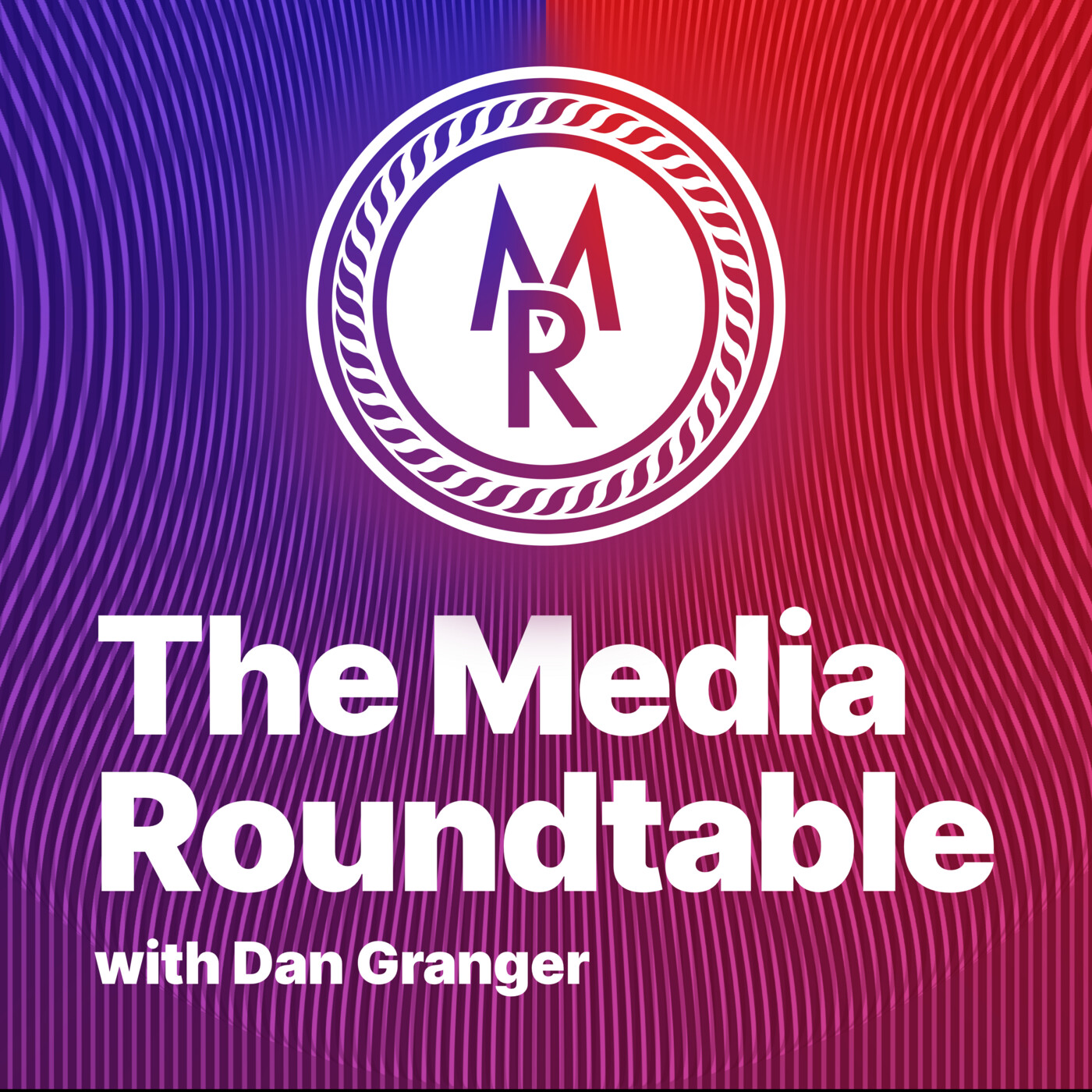
Media Roundtable
PodcastOneTwenty Thousand Hertz
Dallas Taylor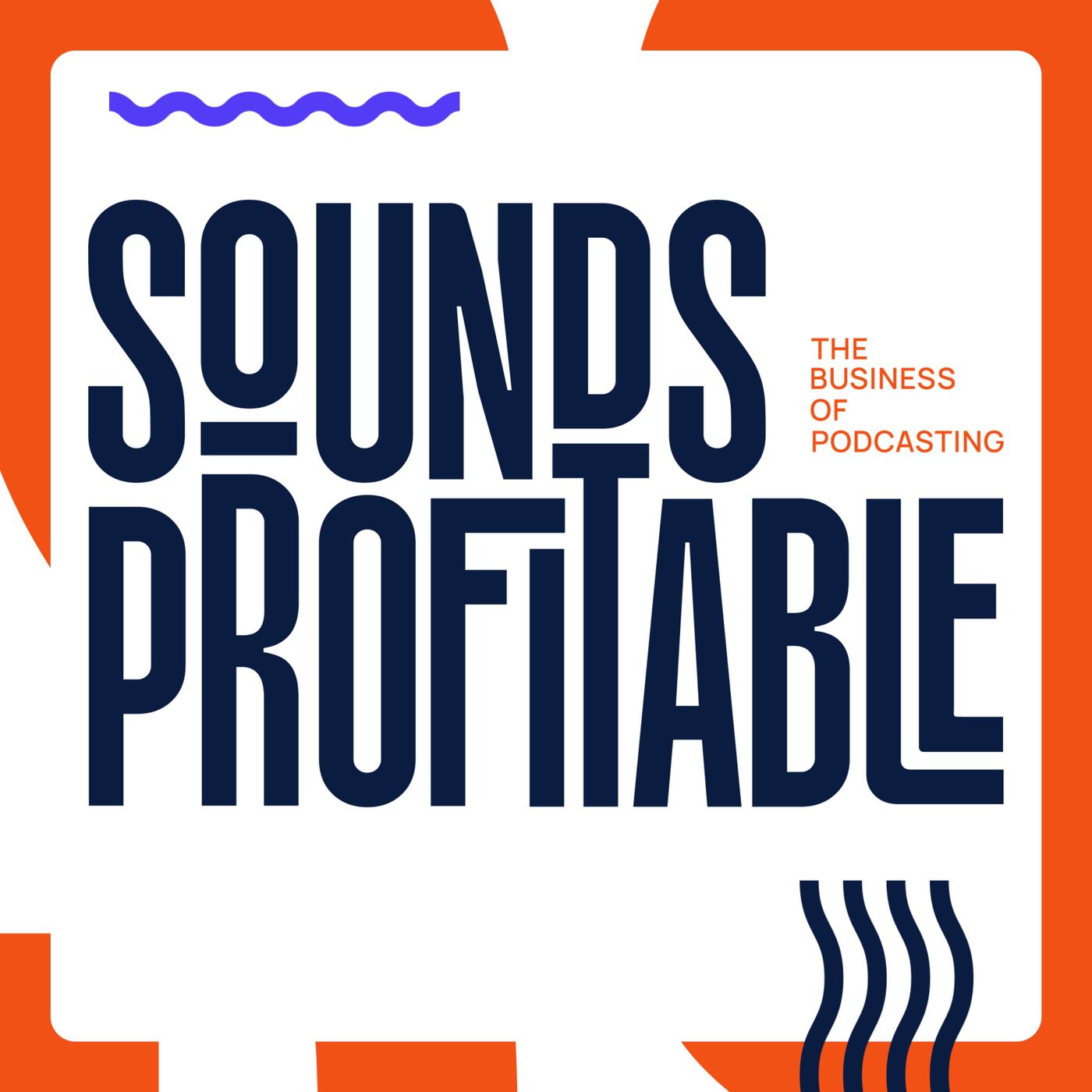
Sounds Profitable
Bryan Barletta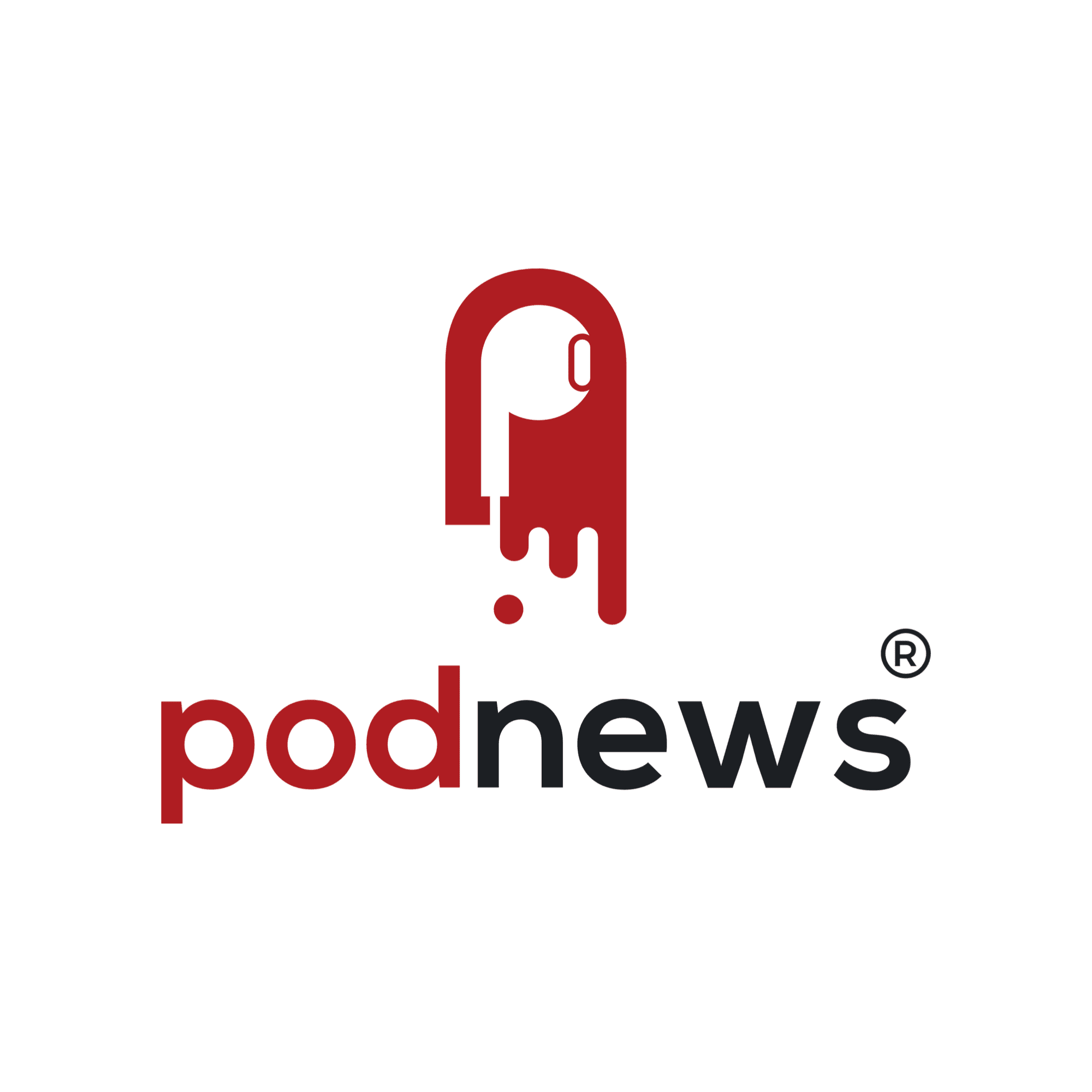
Podnews Daily - podcast industry news
Podnews LLC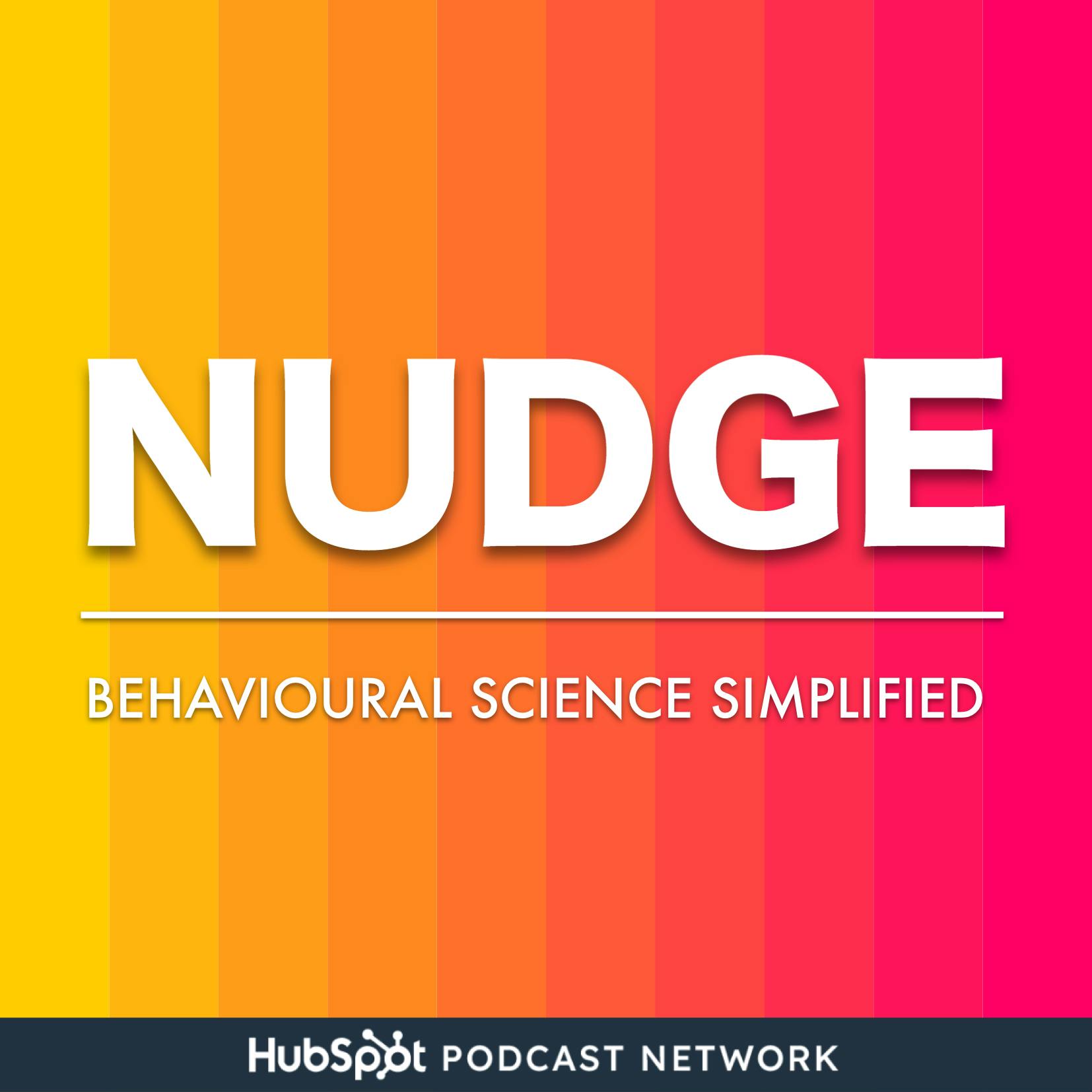
Nudge
Phill Agnew
Sound in Marketing
Dreamr Productions